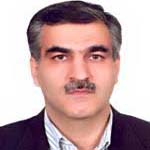Study of CH4 column concentration on Iran: Application of GOSAT satellite observations and WRF-GHG numerical simulations
One of the consequences of the increase and accumulation of greenhouse gases in the atmosphere is kown as global warming, which is undoubtedly one of the most important environmental challenges in the world, especially in the Middle East. Given the scarcity of water resources in recent years, the consequences of global warming and climate change in various countries have reached a very worrying level. Carbon dioxide and Methane are known as two of the most important human greenhouse gases in the atmosphere, accounting for 64% and 18%, respectively, of long-lived radiation induction (LLGHGs) (Forster et al, 2007). Methane is considered as the second most important anthropogenic greenhouse gas after Carbon Dioxide.The most important sources of Methane emissions include: biomass incineration, artificial human emissions, wetland emissions, and wastes. Despite the importance of Methane for physical and atmospheric conditions, the spatial distribution of global resources and Methane sinks is not well understood. With the launch of Methane measurement from satellites, knowledge about the global distribution of Methane in the atmosphere greatly increased.The Japanese Greenhouse Gas Satellite (GOSAT) is the only satellite that measures the column mixing ratio of atmospheric Methane. Since the 1990, various global models have been used to simulate CH4 concentrations. High-resolution simulation of CH4 at hourly intervals on Earth, with diverse ecosystems, due to the lack of intensive spatial and temporal measurements and the impossibility of reliable validations for chemical simulations are known as a serious challenge. The main purpose of this study is to understand the performance of the WRF-GHG model in simulation of Methane concentration and validation the results of medium-scale modeling output in total Methane concentration in comparison with GOSAT satellite observations over Iran.
Iran and some area of its surroundings is considered as a study area. This study focuses on two case periods of hot and dry (August 31-2010) and cold and wet (February 1-28, 2010). In order to provide the initial and boundary conditions of meteorological fields, ERA5 reanalysis data were used with a horizontal resolution of 0.25 ° with a time resolution of 6 hours. Different emission input data from three different global greenhouse gas emission databases EDGAR_v5.0 (anthropogenic emissions), GFAS emissions (fire emissions), and datasets (CMS_V01) (wetland emissions) have been used.Preliminary and boundary conditions for the chemical fields taken from atmospheric monitoring service data (CAMS) with a spatial resolution of 0.8º with 137 vertical levels and with 6 hours time resolution. To investigate and quantify the validity of meteorological fields simulated by the WRF-Chem numerical model, a set of observations of selective synoptic stations is used. For validation of CH4 WRF_Chem column concentration and statistical analysis, in the points that include remote sensing data (GOSAT sensor data), is used the set of level 2 products generated by the NIES algorithm. The local transit time of the GOSAT satellite Is approximated around 13: 00_9: 00, so the simulated concentration for this time is applied in the analysis. The first 15 days of the simulation are omitted to take into account the spin-up time. Statistical parameters of mean bias error (MBE), mean absolute error value (MAE), root mean square error (RMSE), and Pearson correlation coefficient (R) in meteorological and chemical variables are studied for validation of numerical simulations and quantification of error levels.
The model has been able to calculate temporal changes in surface temperature, relative humidity, and wind speed to some extent correctly. The general tendency of the model to simulate the observed temperature and relative humidity for the selected time period is evaluated. In general, model values are closer to summer observations than all thirty days in two selective months. The wind speed forecast is often consistent with the wind speed values obtained from the measurements, and in most cases, the wind speed is overestimated at around 1.2 m/s.Statistical evaluations of the WRF-Chem model, together with the GHG gas-phase chemistry mechanism, show the simulation of Methane concentration versus observations by the GOSAT satellite, and the estimation of the average monthly concentration in February and August 2010. The values of MAE, RMSE, RMSE_u, RMSE_s, BIAS and R are calculated equal to 42.92, 46.05, 7.82, 44.60, -24.99 and 0.63, for hot and equal to 12.01, 13.94, 7.09, 11.68, 7.50 and 0.76 ppb, for cold periods respectively. It can be seen that the WRF-Chem model performed better in Methane simulation in cold and wet periods (January) compared to the hot and dry seasons (August).
In this study, the WRF-Chem model was used to simulate meteorological variables and air pollutants (methane greenhouse gas) concentrations in the Middle East-Iran region during the study period of February and August 2010. The sensitivity of the model is considered using the GHG gas-phase chemistry scheme. The main findings of this study are: The model is able to reproduce temporal changes in surface temperature, relative humidity, and wind. The model underestimates the air temperature and relative humidity respectively around, 1/05 ⸰C -5% in the study area (Iran).In simulating of Methane concentration, and examining the results with related GOSAT satellite observations, the model overestimates around15 ppb of the Methane concentrations. The evaluation results show that the WRF-Chem model performs better in the cold season (January) than in the warm season (August). This uncertainty in CH4 simulation can be attributed to a deficiency in various input components of the CH4 emission in different categories. Improving the simulation for the various parameters reported to the model as the primary CH4 emission can generally help to improve the CH4 simulations.
-
Using ensemble copula coupling for multivariate post-processing of ensemble prediction
Seyedeh Atefeh Mohammadi, *
Journal of the Earth and Space Physics, -
The Sensitivity Analysis of Whitecapping Dissipation Term for Calibration of SWAN Model Forced with ERA5 Winds in the Gulf of Oman
Amir Siahsarani *, , Behzad Layeghi, Davoud Babazadeh
Nivar,


